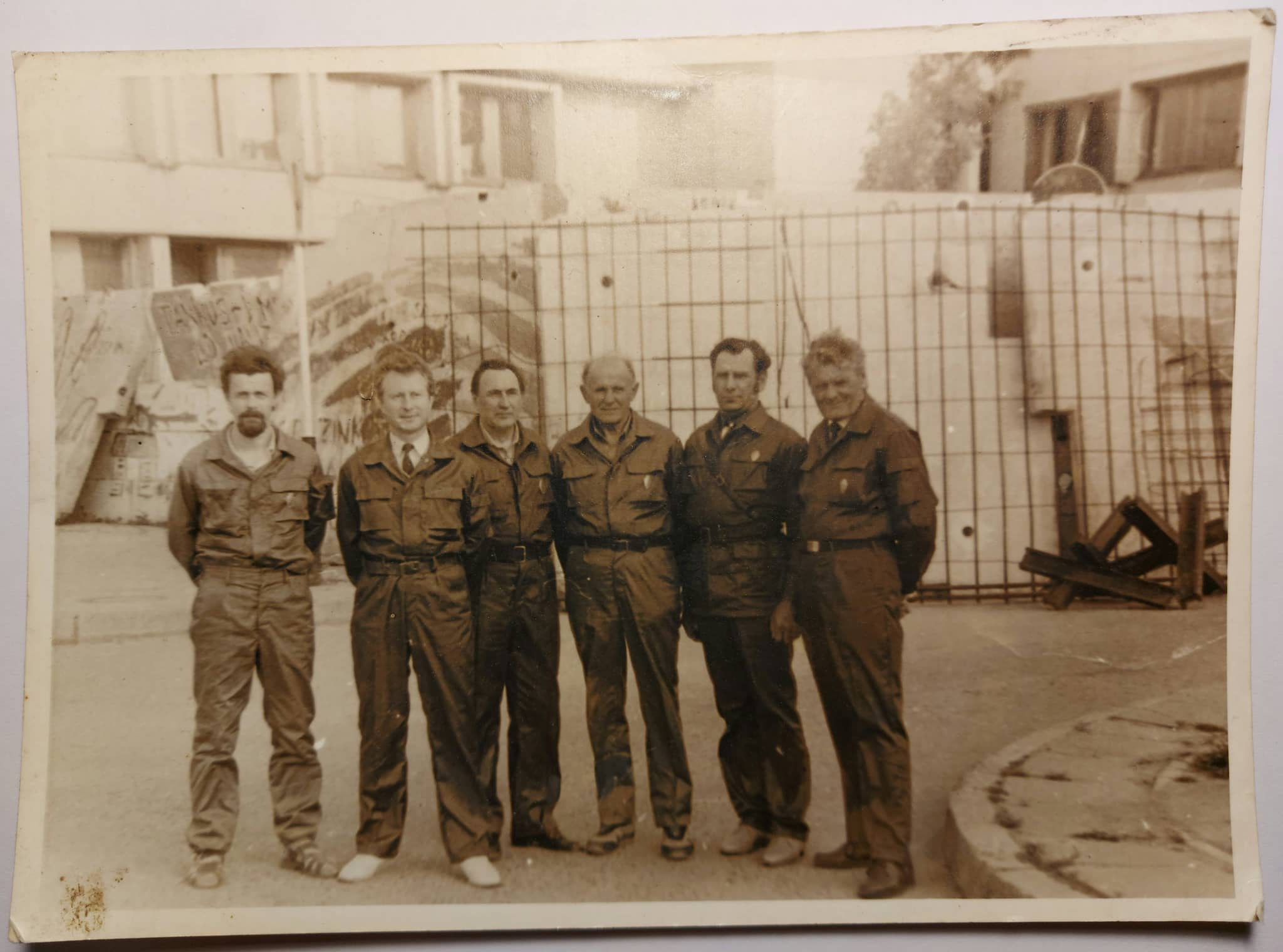January Events 1991 – Extraordinary Courage
(Original Lithuanian Text below)

Mrs.Vanda, a resident of Karašilis village, shares her memories.
Why did you decide to take part in the events of 13 January?
– After November 23, 1990, when the Margiris Riflemen Squad was restored in Šeduva, I became a member of this organization. I took an oath to God and the Homeland, feeling the civic duty, and I went to Vilnius and was on duty at the parliament.
What are your experiences on January 13th?
– Terrible and painful, as fourteen unarmed and fearless people were killed who stood and guarded the television tower.
Where did you come to Vilnius from and how did you feel visiting it?
– I came from Šeduva together with many other people who had the same aim. We had a flag and posters. There were tensions both the country and among the people. From the Northern town (Vilnius military unit), the Russian army fired weapons. Information was received that strategic objects were being targeted at. During our journey, I felt excited that I could contribute with my presence at the place where the heart of Lithuania – the Seimas – was beating.
When did you arrive in Vilnius and how long did you stay there?
– I arrived for the third time in the morning of 11 January and left on 12 January at around 10 pm.
What did you remember the most from that day?
– People’s concentration, unity, determination, extraordinary courage – to fight until we win.
How do you think if the January 13 scenario were repeated now, would Lithuanians unite together? Would they fight for freedom like that time?
– I think so, because our freedom is covered with the blood of the victims of January 13.
Would you be determined to defend Lithuania’s freedom once again in the event of a threat?
– I would not even doubt, because no one gives freedom, freedom needs to be won. We must protect and cherish it.
How would you explain to a pupil what January 13 is for Lithuania?
– It’s Freedom Day. Lithuania was the first of the republics of the Soviet Union to declare on March 11, 1990, that it was restoring its statehood and becoming an independent state. Latvia and Estonia followed our example.

Do you have an object, a photo or a place that is associated with that time and has a special meaning for you?
– There are several photos and a badge that survived from that period. In the first photo, people who were on duty near the Seimas were warming their hands by the fire. Sitting in the middle, is Izolina from Šeduva. In the second – Radviliškis riflemen (from left to right): doctor Viktoras, doctor Kęstutis, Juozas, Jonas, Bronius and Zigmas. These men became volunteers on 11 January 1991 and protected the parliament inside for about a month. And the badge is a volunteer badge of honour, established in 1991 and approved in 2011.

(Pakruojis Atžalynas Gymnasium)
Savo atsiminimais dalijasi Karašilio kaimo gyventoja, senjorė Vanda.
Kodėl nusprendėte dalyvauti sausio 13-osios įvykiuose?
– Po 1990 m. lapkričio 23 d., kai Šeduvoje buvo atkurta šaulių Margirio kuopa, tapau šios organizacijos nare. Daviau priesaiką Dievui ir Tėvynei, tai jausdama pilietinę pareigą važiavau į Vilnių ir budėjau prie parlamento.
Kokie jūsų sausio 13-osios išgyvenimai?
– Šiurpūs ir skaudūs, kadangi žuvo keturiolika beginklių ir bebaimių žmonių, stovėjusių ir saugojusių televizijos bokštą.
Iš kur atvykote į Vilnių ir kokie jausmai vykstant aplankė?
– Atvykau iš Šeduvos su bendraminčiais autobusu. Turėjome vėliavą ir plakatus. Tiek seime, tiek žmonėse tvyrojo įtampa. Iš Šiaurės miestelio (Vilniaus karinio dalinio) rusų kariuomenė žvangino ginklais. Buvo gauta informacija, kad rengiamasi užgrobti strateginius objektus. Vykstant jaučiausi pakylėta, kad galiu prisidėti savo buvimu ten, kur plakė Lietuvos širdis – seimas.
Kada atvykote į Vilnių ir kiek laiko ten buvote?
– Atvykau jau trečią kartą sausio 11 dienos rytą ir išvykau sausio 12 dieną apie 22 valandą.
Kas jums labiausiai įsiminė iš tos dienos?
– Žmonių susitelkimas, vienybė, ryžtingumas, nepaprasta drąsa – kovoti iki laimėsime. – Kaip manote, jeigu dabar pasikartotų sausio 13-osios scenarijus ar lietuviai susitelktų? Ar kovotų už laisvę kaip tuo laiku?
Manau, kad taip, nes mūsų laisvė aplaistyta sausio 13-osios aukų krauju.
Ar pasiryžtumėte dar kartą ginti Lietuvos laisvę iškilus grėsmei?
– Net nesuabejočiau, nes laisvės niekas nedovanoja, laisvė iškovojama. Ją privalome saugoti ir branginti.
Kaip paaiškintumėte moksleiviui, kas Lietuvai yra sausio 13-oji?
– Tai Laisvės Gynėjų diena. Lietuva pirmoji iš Sovietų Sąjungos respublikų 1990 metų kovo 11 dieną pareiškė, kad atstato savo valstybingumą ir tampa nepriklausoma valstybe. Mūsų pavyzdžiu pasekė Latvija ir Estija.
Ar turite objektą, nuotrauką ar vietą, kuri jums asocijuojasi su tuo laiku ir turi ypatingą reikšmę?
– Yra išlikusios kelios nuotraukos ir ženkliukas iš to laikotarpio. Pirmoje nuotraukoje sužvarbę žmonės, budėję prie seimo šildosi rankas prie laužo. Sėdinti viduryje yra Izolina iš Šeduvos. Antroje – Radviliškio šauliai (iš kairės į dešinę): gydytojas Viktoras, gyd. Kęstutis, Juozas, Jonas, Bronius ir Zigmas. Šie vyrai tapo savanoriais 1991m. sausio 11 d. ir saugojo parlamentą viduje apie mėnesį laiko. O ženkliukas yra savanorio garbės ženklas, įsteigtas 1991 m., o patvirtintas 2011m.
